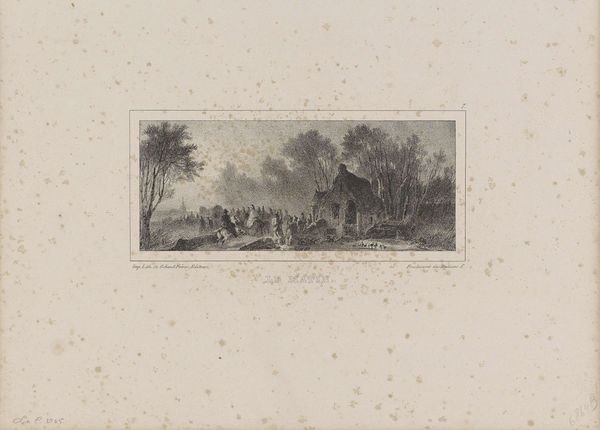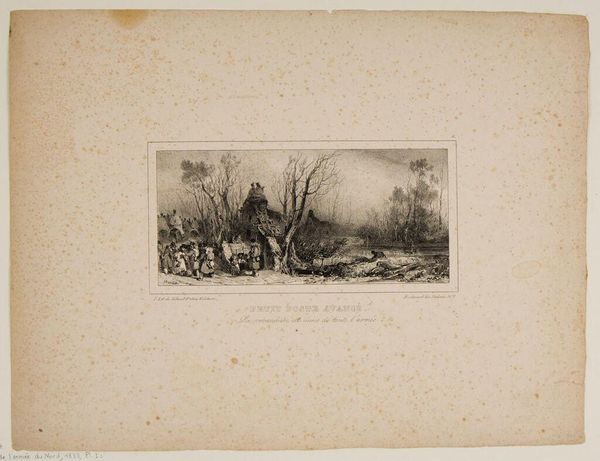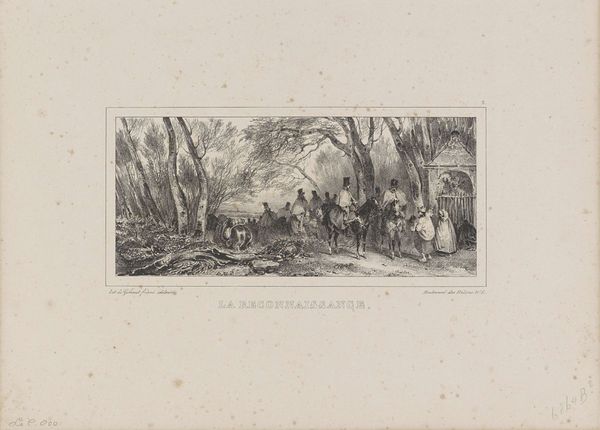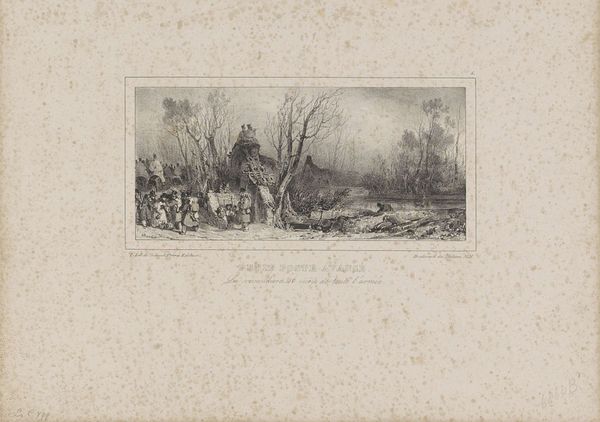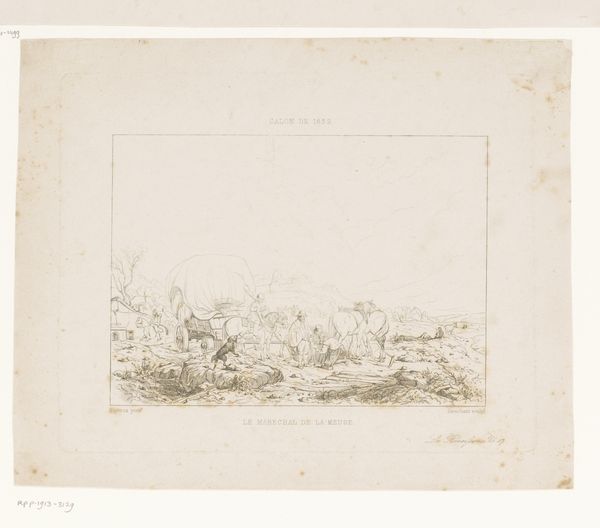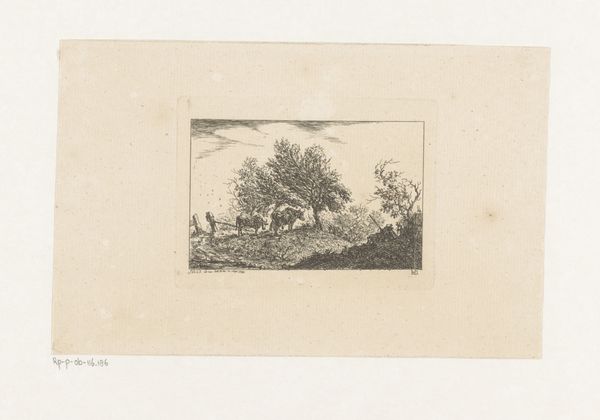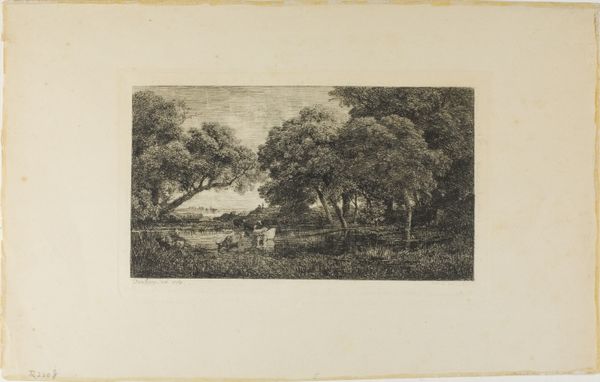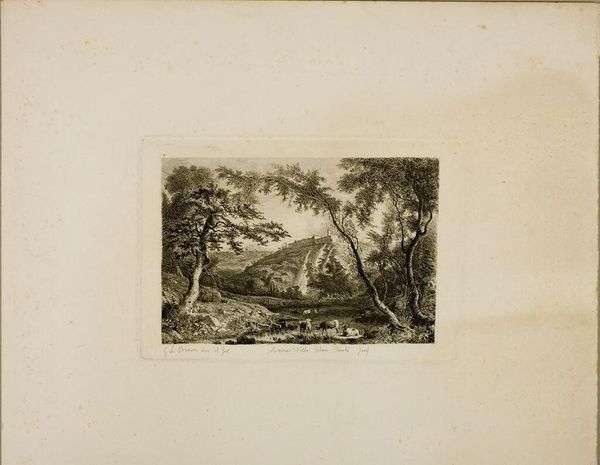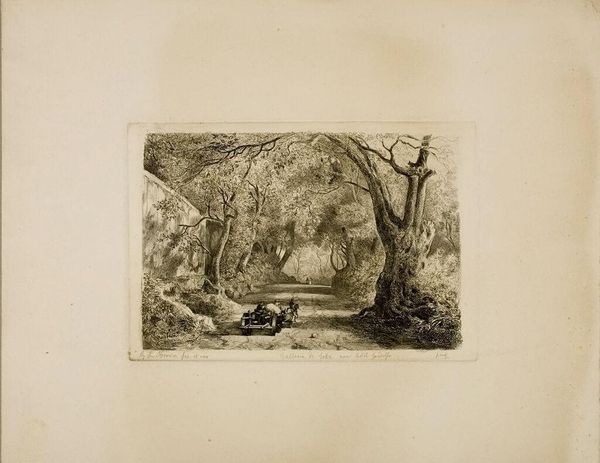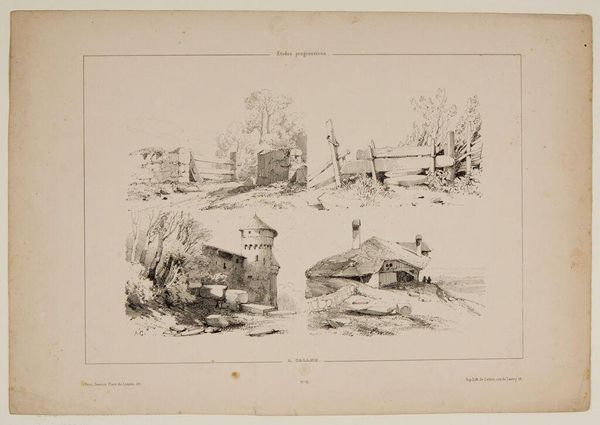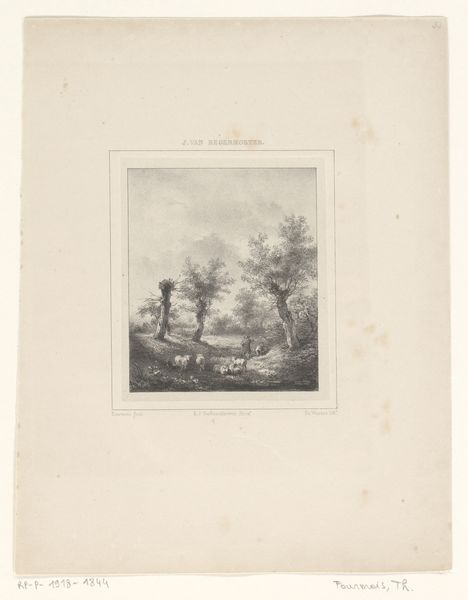
drawing, print, etching
#
drawing
# print
#
etching
#
etching
#
romanticism
#
history-painting
Dimensions: height 245 mm, width 340 mm
Copyright: Rijks Museum: Open Domain
Nicolas Toussaint Charlet made this print, "Lichte cavalerie", around 1832. The printmaking process, in this case etching or engraving, is crucial to understanding the artwork. Charlet probably used a metal plate, coated with wax, drew the composition, and then submerged it in acid, which bites into the exposed lines. The ink settles into these lines and is then transferred onto paper. Consider how the very act of creating a print makes it reproducible. It's not a unique work of art, but one intended for wider circulation. This connects it to the rise of mass media in the 19th century, and the increasing availability of imagery to a broader public. The dense strokes create a tonal range that describes the scene's somber mood. The labor involved in producing this print — the meticulous work of etching each line — contrasts with the ease with which it could be reproduced and disseminated, raising questions about art, labor, and the burgeoning age of mechanical reproduction.
Comments
No comments
Be the first to comment and join the conversation on the ultimate creative platform.
